Could Tesla’s wild Cybertruck accelerate 48V standardisation?
- PostedPublished 10 January 2024
Just as Tesla prompted consumers and manufacturers to adopt electric vehicles, the company could have taken a significant step toward the uptake of 48-volt architecture among other manufacturers.
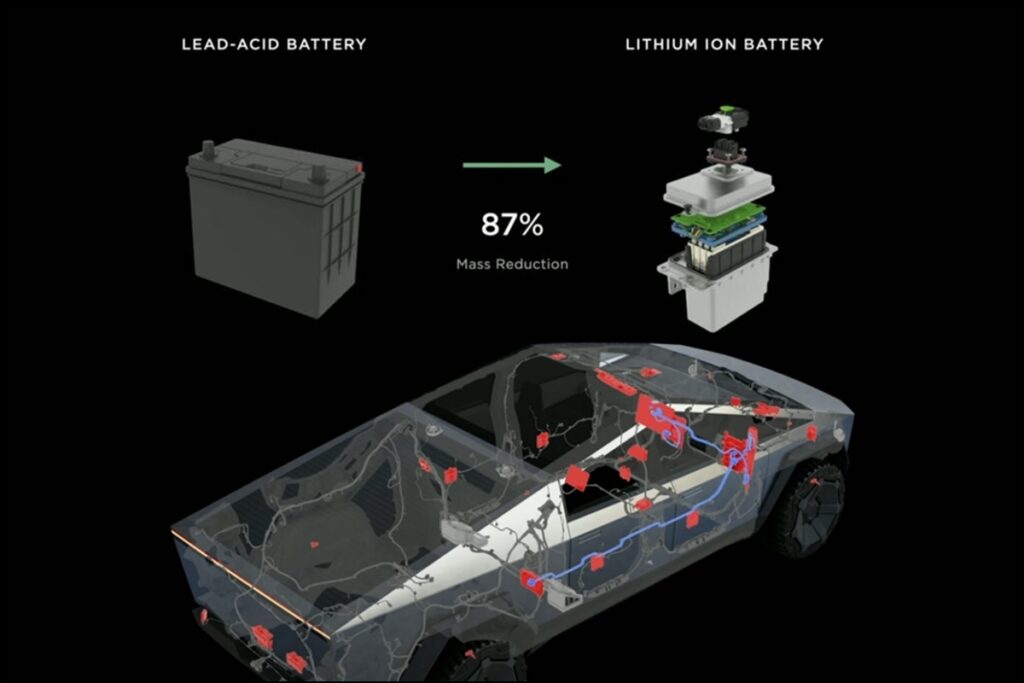
By sharing details of the Cybertruck’s 48-volt electrical architecture with the automotive industry, Tesla aims to accelerate the transition to a system that offers simplified wiring, cost savings, space-saving benefits, improved energy efficiency, and reduced environmental impact.
Ford CEO Jim Farley expressed his appreciation for the gesture, stating: “Great for the industry!” He has also suggested that Ford is open to implementing a 48-volt system in its future vehicles.
Tesla CEO Elon Musk also chimed in on the matter, responding with a simple “You’re welcome.” This exchange of messages has sparked speculation that other manufacturers may follow suit and explore the integration of 48 volts into their vehicle systems.
The history of automotive electrical architecture
In the early days of mass-produced vehicles, 6V architecture was commonly used to power basic components like headlamps. However, when the industry shifted to 12V electrics in the 1960s, this transition brought numerous benefits, including standardised and affordable components that could be easily adapted to any vehicle.
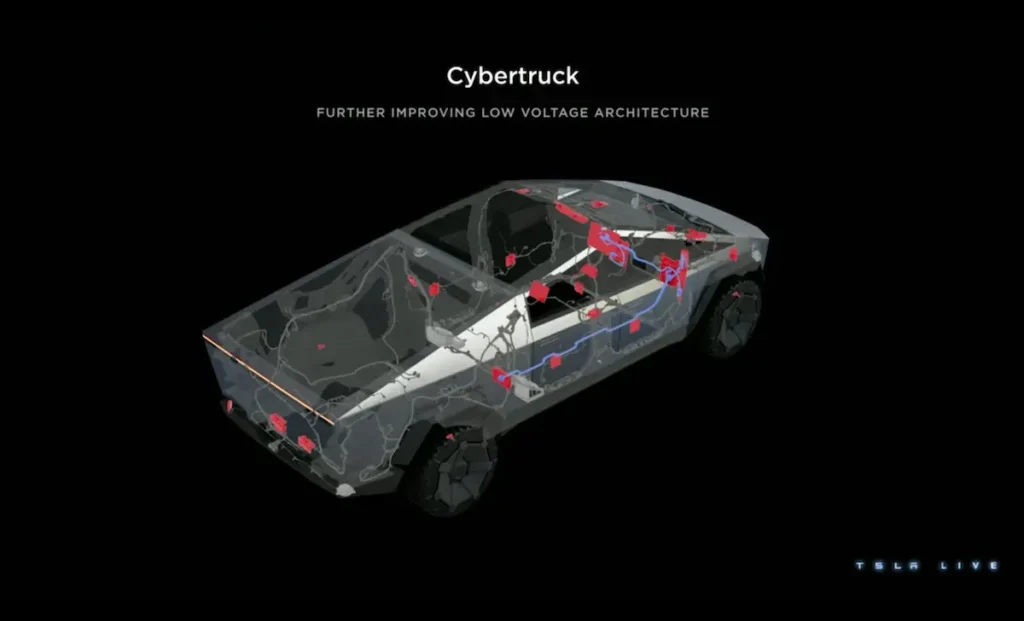
However, the limitations of the 12V architecture have been evident for some time. As vehicles incorporate more electrical components, delivering sufficient power to support advanced features such as hybridisation, electric propulsion, thermal management, and sophisticated driver-assistance systems becomes increasingly complex.
Modern vehicles contain an astonishing 2000 copper wires that stretch more than 1.6km in length, compared to the 55 wires measuring 46 metres found in cars from 1948. This complexity has resulted in convoluted and intricate wiring layouts, causing challenges for manufacturers and repairers while also adding significant weight.
By increasing the voltage, the 48-volt architecture enables the transmission of the same power through smaller wires. This simplifies the intricate wiring harnesses, offering cost savings of over 50% as well as around an 85% reduction in the weight of wiring for electric vehicles.
This breakthrough has the potential to bring about a revolutionary change in the automotive industry, enhancing the efficiency and cost-effectiveness of electrical systems.
Uptake of 48V systems so far
One of the main obstacles to implementing 48V architecture is the automotive supply chain. If not all systems are converted to 48V, the advantages are reduced. Established car-makers, in particular, may encounter difficulties due to their existing partnerships with third-party suppliers who may not be prepared to handle the rapid transition or may lack the motivation to produce 48V accessories without adequate demand.
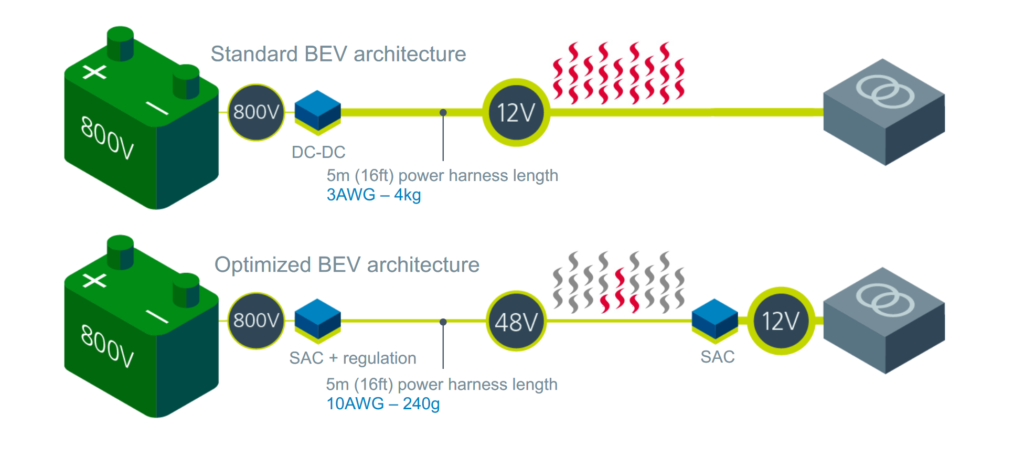
This results in higher costs for low-volume 48V components. Transitioning would need to be a gradual process for many, resulting in a situation where both the demand for 48V components and the readiness of suppliers need to align.
Tesla’s minimal reliance on external suppliers, however, gives the company an edge in transitioning to the 48-volt architecture as it has fewer legacy vehicle designs to support, making it well-positioned to navigate this technological shift smoothly.
In addition to the competitive advantage gained from being an early adopter, Tesla’s collaboration aims to create a domino effect, encouraging other automakers, including those producing traditional fossil fuel vehicles, to embrace the technology sooner. This not only benefits Tesla but also pushes the industry towards a new standard in vehicle electrical systems.
Sharing tech
Tesla has a history of sharing some of its advancements, so it is no great surprise that Tesla has chosen to document the Cybertruck’s 48-volt implementation
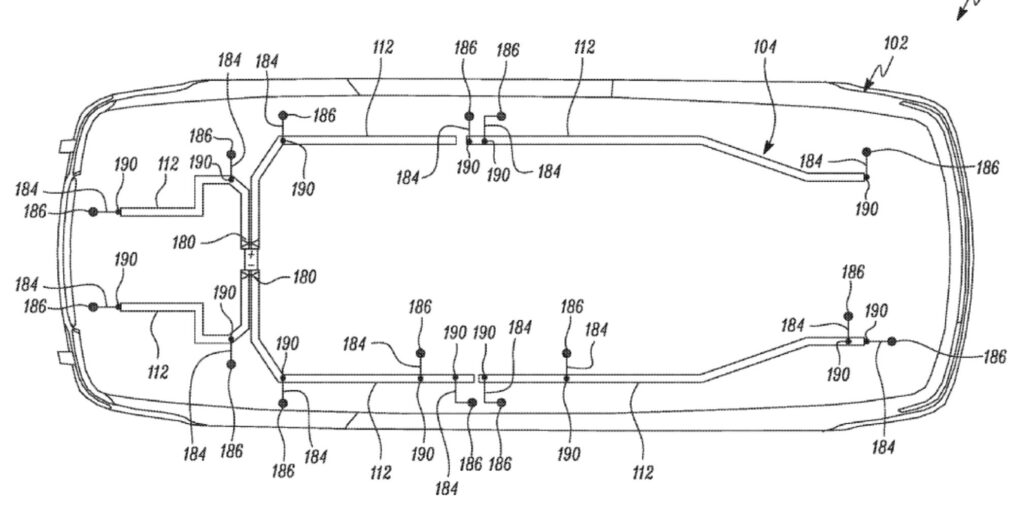
However, industry’s adoption of Tesla technologies has been inconsistent and the company’s strategic motives behind the gesture include the consolidation of knowledge, reduced redundant work, and an increased pool of skilled workers.
Is the time right for 48V?
For decades, the automotive industry has been considering higher voltages. Initially proposed as 42V in the 90s, it eventually settled on 48V systems as this offers a sufficient buffer to prevent shocks above the 60V threshold, eliminating the need for additional protection measures.
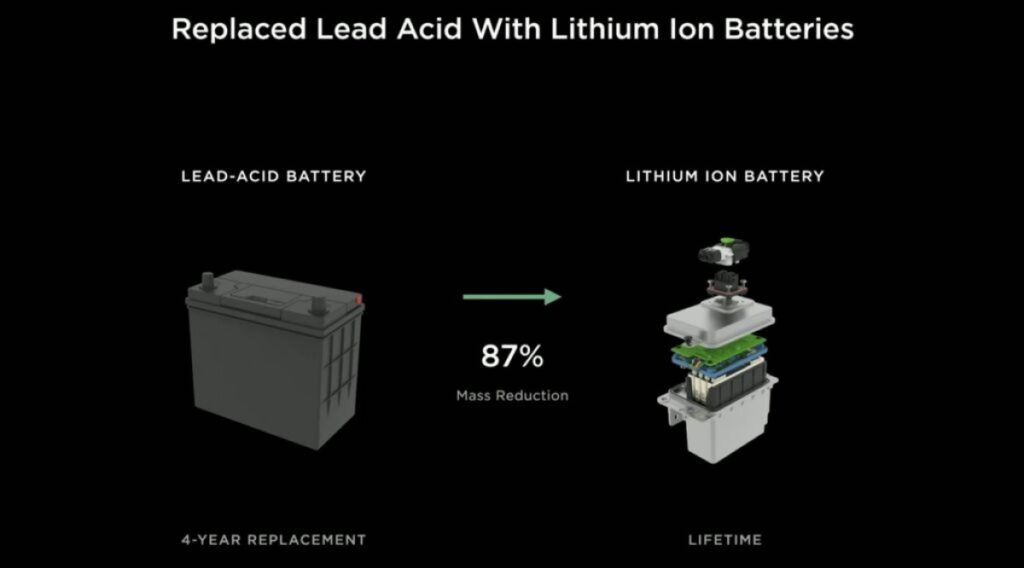
Tesla’s decision to share its 48-volt architecture is significant, promoting collaboration and innovation while accelerating the adoption of this technology.
It has the potential to reshape the automotive industry and pave the way for more advanced and efficient vehicles, benefiting both manufacturers and consumers.
Further strengthening the belief that the broader industry is embracing a 48-volt future, after reading Tesla’s 48V documentation, Mr Farley said he realised that Ford’s skunkworks, referred to as its “next-gen team” has “been on a similar path”.
“Let’s work together to help the supply base move into the 48V future as well,” he said.
- CategoriesIn SightGlass
- Tags48V, auto electricians, electric vehicles, EV, Ford, SightGlass News Issue 32, Tesla


